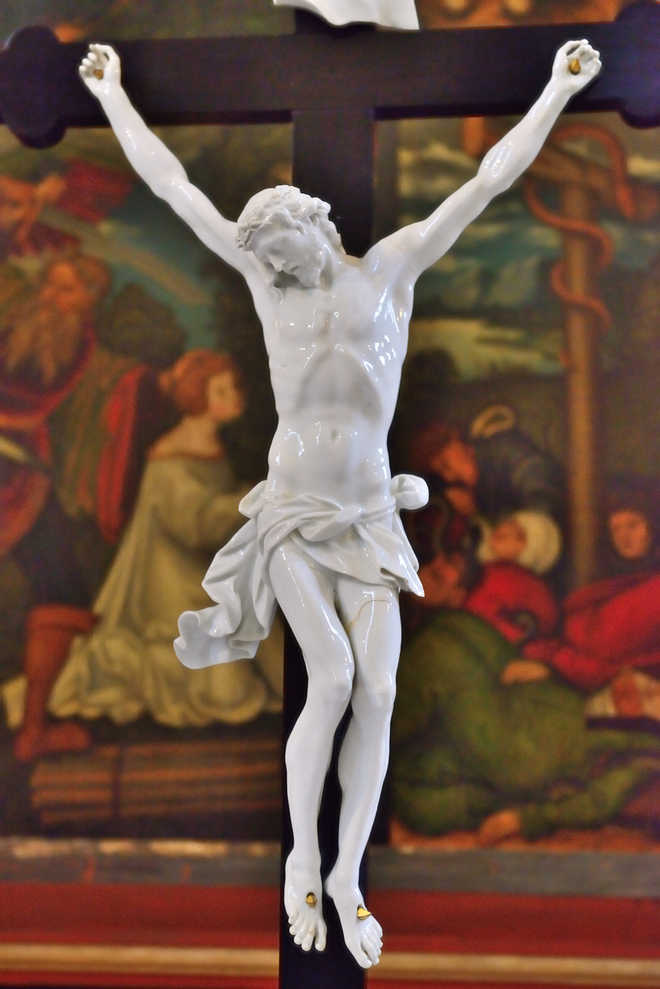Where porcelain is pricier than gold
Parbina Rashid
It was not the exquisite red and white vase which finds a prominent place in my sister's Dresden apartment, but the story behind it that aroused my curiosity. Well, enough to add Meissen to the itinerary during my recent visit to Germany. The story has everything that thrillers are made of -deceit, imprisonment, lucky co-incidences. This is how it goes...
At the beginning of the 18th century, Johann Friedrich Böttger claimed that he had cracked the formula of producing gold from sand. When Augustus the Strong, King of Poland and Elector of Saxony, heard about it, he kept him in protective custody and asked him to produce gold. For years, Böttger was unsuccessful in his attempts.
During the same time, Ehrenfried Walther von Tschirnhaus, a mathematician and scientist, ran his experiments to produce porcelain. In 1707, Böttger became a part of Tschirnhaus' team. When Tschirnhaus suddenly died, the recipe apparently was handed over to Böttger, who, within one week, announced to the King that he could make porcelain.
Böttger refined the formula and with some Dutch co-workers, who had expertise in firing and painting tiles, and began manufacturing on an experimental basis. In 1709, the king established the Royal-Polish and Electoral-Saxon Porcelain Manufactory, production of what is now known as the first European porcelain or Meissen China.
Meissen is located about 25 km northwest of Dresden on the banks of the Elbe river in eastern Germany. This small, sleepy town is connected by railways and roads. It takes about 45 minutes to reach Meissen from Dresden. A few minutes of walk from the station brought me to the crossroads. The signage towards the left indicates The Manufacturer and the narrow lanes towards the right leads to the Albrechtsburg castle and the Gothic Meissen Cathedral.
I took to the left. A few kilometers on the undulating terrain took me to the modern building, which is currently making Meissen porcelain, following the same formula and the same method, strictly handcrafted. The entrance to the building displays the famous blue crossed swords sign, which authenticates a Meissen piece. Despite minor variations over the years, the symbol has remained consistent. By studying these subtle variations, one can tell whether a Meissen China is fake or real, and the era it belongs to, if real.
A ticketed tour with an auto-guide device shows the entire process of Meissen China being created, right from mixing of the ingredients following the secret formula to the final product, which is hand-painted by artists. The unit has a huge display centre for all Meissen China designs created over the years. The famous onion pattern is still the most sought after. It was coveted even during the time of King Augustus.
Before I set out for Meissen, I was told that the city attracts Richie Rich tourists who are the main clients of the astronomically priced Meissen China and other antiques. True. The city is dotted with antique dealers, who offer a wide range of antiques besides Meissen China. Browsing at a couple of shops, and coming to the conclusion that nothing fitted into my shoe-string budget, I headed straight to Albrechtsburg Castle.
Majestic Albrechtsburg castle
The Castle that rises majestically above the Elbe river valley was built in the late 15th century, supervised by master builder Arnold von Westfalen. It stands out for its outstanding architecture in the shape of widely arched curtain windows, deeply recessed cellular vaulting and the filigree spiral staircase. After Böttger discovered porcelain, the first European manufactory was set up in the castle in 1710 by a decree of Augustus the Strong. In a period spanning over 150 years, beautiful pieces of porcelain art were created here, which are now part of the museum. Historical exhibits that include handwritten notes by Ehrenfried Walther von Tschirnhaus and Böttger, figurines, cutleries and other personal belongings of Augustus the Strong make for a fascinating watch.
Located next to the Albrechtsburg, is the Meissen Cathedral. It is a Gothic church that stands high with pride at the highest point of the city. The cathedral was established in the year 968 by Emperor Otto and it has been in use ever since.
During the protestant movement in the 15th Century, the Meissen diocese was dissolved and it turned into a protestant church. An example of classic Gothic architecture, the church building hasn't changed much over the centuries, except for a few additions. All the quintessential elements of Gothic architecture are seen here, like pointed arch, the ribbed vault and the flying buttress.
As all the climbing works up an appetite, I sat down at one of the cafes to enjoy Germany's favourite dish, Currywurst, and mulled over Böttger's story. The formula of 'white gold' he chanced upon became the key to his freedom finally, giving his story a happy ending!










